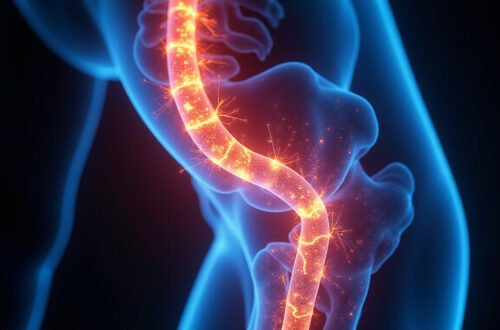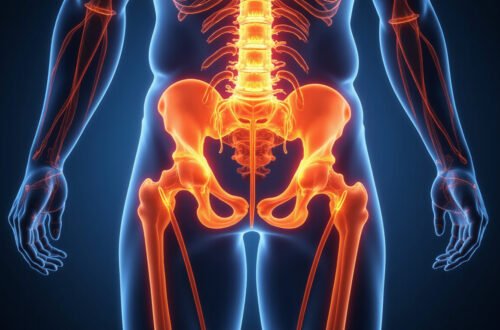Piriformis syndrome is a condition that can cause significant discomfort and impede daily activities if left untreated. Finding effective piriformis syndrome treatment is essential for anyone suffering from the muscle tightness or nerve pain typical of this syndrome. This article explores the top strategies that can provide lasting relief, helping you regain mobility and reduce pain.
Understanding Piriformis Syndrome
Piriformis syndrome occurs when the piriformis muscle, located deep in the buttocks near the top of the hip joint, spasms or tightens, irritating the nearby sciatic nerve. This irritation can cause pain, numbness, or tingling along the back of the leg—a condition often mistaken for sciatica caused by spinal issues.
Although piriformis syndrome can arise from various causes such as injury, prolonged sitting, or repetitive activities, the key to managing the condition lies in a comprehensive piriformis syndrome treatment approach that targets both muscle spasms and nerve inflammation.
Top Strategies for Piriformis Syndrome Treatment
Here are the most effective treatment methods for managing piriformis syndrome and providing lasting relief:
1. Physical Therapy and Stretching Exercises
Physical therapy is often the first line of treatment recommended by healthcare professionals for piriformis syndrome. A physical therapist can design a personalized exercise plan focusing on:
- Stretching the piriformis muscle to reduce tightness
- Strengthening surrounding muscles to support hip stability
- Correcting posture and movement patterns to prevent recurrence
Some common stretches include the piriformis stretch, hip external rotator stretch, and hamstring stretches. Consistently practicing these exercises can significantly alleviate symptoms.

2. Medications for Pain and Inflammation
Medications can play a supportive role in piriformis syndrome treatment. Over-the-counter pain relievers like ibuprofen or naproxen help reduce inflammation around the irritated nerve. In some cases, doctors may prescribe muscle relaxants or corticosteroid injections to ease severe muscle spasms and pain.
3. Heat and Cold Therapy
Applying heat to the affected area helps improve blood flow and relax muscles, while cold therapy can reduce inflammation. Patients often find alternating between heat and cold packs to be beneficial as part of their home treatment routine.
4. Lifestyle Modifications
Avoiding activities that aggravate symptoms is crucial for effective piriformis syndrome treatment. This might include reducing prolonged sitting, taking frequent breaks to stretch during sedentary work, and modifying exercise routines to avoid overloading the piriformis muscle.
5. Alternative Therapies
Many individuals benefit from complementary therapies such as:
- Massage therapy to reduce muscle tension
- Acupuncture to target painful trigger points
- Chiropractic adjustments to improve pelvic alignment
These methods provide additional relief and can be integrated into a broader treatment plan.
6. Surgical Intervention in Rare Cases
Surgery is rarely necessary but may be considered if conservative measures fail after several months. The surgical procedure involves relieving pressure on the sciatic nerve by cutting the piriformis muscle or releasing scar tissue. However, this approach is reserved for severe cases due to inherent risks.
Summary of Piriformis Syndrome Treatment Methods
| Treatment Method | Purpose | Frequency/Notes |
|---|---|---|
| Physical therapy | Stretch and strengthen muscles | Daily exercises, sessions with therapist |
| Medications | Reduce pain and inflammation | As prescribed or OTC as needed |
| Heat and cold therapy | Muscle relaxation and inflammation reduction | Apply for 15-20 minutes alternately |
| Lifestyle modifications | Prevent symptom aggravation | Ongoing adjustments |
| Alternative therapies | Muscle tension relief and alignment | Weekly or biweekly sessions |
| Surgery | Nerve decompression in severe cases | Last resort after conservative treatments |
Frequently Asked Questions About Piriformis Syndrome Treatment
Q1: How long does it usually take to recover with piriformis syndrome treatment?
Recovery time varies depending on the severity but most patients experience significant improvement within 4 to 6 weeks of consistent treatment, particularly with physical therapy and lifestyle adjustments.
Q2: Can piriformis syndrome treatment be done at home?
Yes, many treatment strategies like stretches, heat/cold therapy, and lifestyle changes can be done at home. However, consultation with a healthcare provider is essential to tailor the treatment plan and rule out other causes of sciatic pain.
Q3: Are there any exercises to avoid during piriformis syndrome treatment?
High-impact activities or exercises involving deep hip rotation and intense squatting should be avoided initially, as they may worsen inflammation. It’s best to work under the guidance of a physical therapist regarding safe exercise choices.
Evidence-Based Insights on Piriformis Syndrome Treatment
A review published in the Journal of Orthopaedic & Sports Physical Therapy emphasizes that a combination of manual therapy, stretching, and strengthening exercises is the most effective conservative treatment approach for piriformis syndrome. The study highlights the importance of early intervention and physical therapy to prevent chronic pain and disability (source).
Take Charge of Your Piriformis Syndrome Treatment Today
If you’re suffering from persistent buttock pain or sciatic nerve symptoms, don’t delay seeking effective piriformis syndrome treatment. Early diagnosis and a comprehensive treatment strategy can help you avoid prolonged discomfort and restore your quality of life. Partner with medical professionals to design a plan that combines physical therapy, medication, lifestyle changes, and supportive therapies tailored to your needs. Start your journey toward lasting relief and mobility today!






